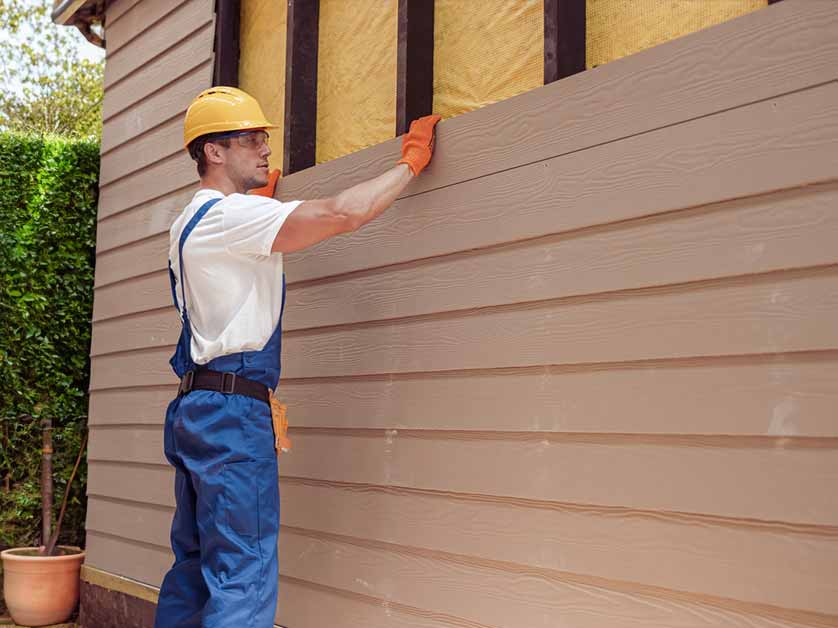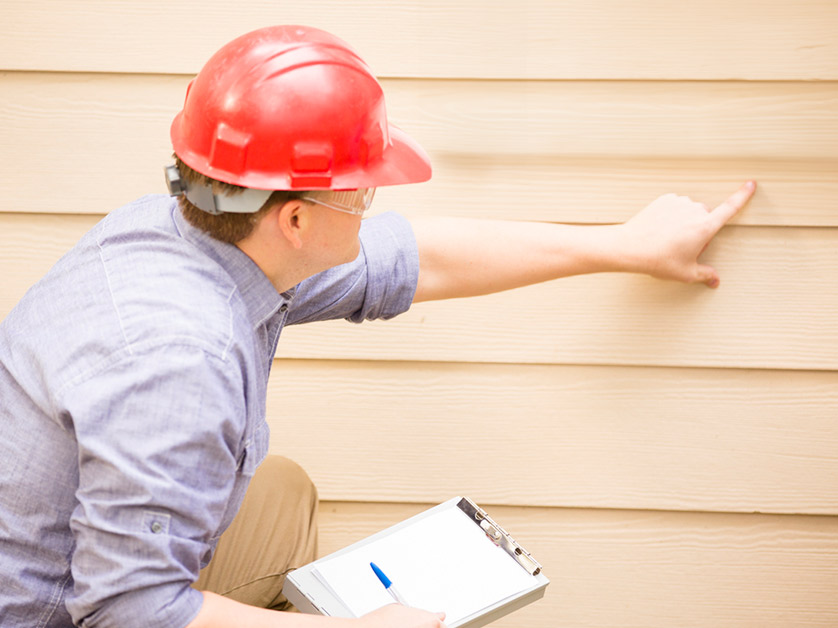Your Go-To Morris Siding Contractor for All Residential Siding Needs
Your Go-To Morris Siding Contractor for All Residential Siding Needs
Blog Article
The Crucial Guide to the Various Sorts Of Exterior Siding and Their Distinct Benefits
In the world of home improvement, choosing the right exterior siding is a critical decision that influences both aesthetic charm and useful efficiency. The range of materials offered, such as timber, plastic, fiber steel, brick, and concrete, each offer one-of-a-kind advantages that accommodate different needs and choices. Recognizing these distinctions can substantially improve the longevity and value of a property - morris siding contractor. Nevertheless, with so lots of options to consider, which siding material genuinely sticks out for your specific task? Discovering these choices can bring about informed decisions that straighten with both style and practicality.
Wood Home Siding
Timber home siding, a preferred option for residential outsides, uses a classic aesthetic that integrates natural beauty with architectural stability. This siding product is available in various styles, including clapboard, tiles, and board-and-batten, enabling property owners to tailor their appearance to match their design choices. Wood home siding is typically crafted from resilient species such as cedar, redwood, or pine, which are understood for their resilience and capability to withstand environmental stressors.
Among the key benefits of timber house siding is its exceptional insulation homes, which can add to power efficiency and reduced heating expenses. Additionally, timber house siding is naturally degradable, making it an environmentally pleasant choice when sourced sustainably. Routine upkeep, including paint or staining, can prolong its life-span and improve its look, allowing home owners to protect the all-natural beauty of the timber.
However, prospective disadvantages consist of sensitivity to insects, rot, and climate damage, demanding sufficient therapy and maintenance - morris siding contractor. In spite of these worries, when correctly looked after, wood house siding can offer a durable and lovely service that enhances the personality of a home while using a warm, inviting atmosphere

Vinyl Home Siding
Vinyl siding has emerged as a leading choice for property owners seeking a low-maintenance exterior alternative that integrates longevity and affordability. This flexible product is crafted from polyvinyl chloride (PVC), making it immune to numerous climate condition, including moisture and UV rays. Therefore, plastic home siding does not warp, rot, or discolor, ensuring lasting visual appeal.
One of the primary advantages of plastic home siding is its extensive variety of shades and designs, permitting homeowners to attain the preferred look for their property without the need for frequent repainting. Additionally, vinyl home siding is simple to set up, which can substantially decrease labor expenses during construction or restoration tasks.
Vinyl home siding also adds to energy performance. Several alternatives attribute insulation support, which improves thermal performance, assisting to keep comfortable interior temperature levels and potentially reducing energy bills. Its smooth surface promotes easy cleansing, requiring just regular cleaning with a yard pipe to remove dirt and debris.
Fiber Concrete Siding
Fiber cement exterior siding has acquired grip among homeowners and builders alike as a result of its amazing combination of longevity and aesthetic flexibility. Made up of a blend of cellulose, sand, and cement fibers, this house siding alternative is crafted to endure severe climate problems, including high winds, heavy rainfall, my explanation and temperature level variations, making it a lasting selection for property outsides.

One of the key benefits of fiber concrete house siding is its resistance to pests, such as termites, and its non-combustible nature, offering improved fire safety and security. morris siding contractor. Furthermore, it is offered in a wide selection of shades, styles, and structures, enabling house owners to achieve their wanted visual without compromising efficiency
One more advantage is its low maintenance requirements; fiber concrete home siding generally needs painting or discoloration every 5-10 years, which is less regular than various other materials. Additionally, its durability adds to a lower overall expense of ownership, as it reduces the need for frequent repairs or substitutes.
Eventually, fiber concrete home siding stands for an excellent investment for those looking for a resistant, attractive, and functional exterior choice, combining both form and function to boost the home's aesthetic allure.
Steel Home Siding
The appeal of steel house siding hinges on its robust toughness and contemporary aesthetic allure, making it a favored option for contemporary style. Readily available in products such as aluminum and steel, steel home siding offers a series of colors and finishes, allowing house owners to attain a personalized appearance that matches their style vision.

Energy performance is an additional significant advantage, as many steel house siding items are developed with insulation choices that aid manage indoor temperature levels. This can result in Full Report minimized power costs with time. Additionally, steel house siding is commonly recyclable, making it an eco-friendly choice for sustainability-minded home owners.
The installation procedure for steel house siding can be fairly straightforward, leading to a quicker turn-around time for building and construction jobs. Overall, metal exterior siding integrates functionality and style, making it a functional option for those looking for a visually enticing and long-lasting outside coating.
Block and Stone Home Siding
Block and rock house siding stands apart as a timeless selection that enhances the visual charm of any type of home. Known for their longevity and low maintenance, these materials give an exceptional roi while raising the residential or commercial property's aesthetic allure. Offered in various colors, textures, and patterns, block and stone can be tailored to suit diverse building designs, from standard to contemporary.
One of the main advantages of block and stone siding is their energy efficiency. Both products possess natural shielding buildings that assist control indoor temperatures, possibly decreasing cooling and heating costs. In addition, they provide exceptional fire resistance compared to other home siding choices, adding to enhanced security.
An additional benefit is their durability. Block and rock can last for decades, commonly requiring minimal maintenance beyond periodic cleansing. Unlike wood siding, they are unsusceptible insects and rot, making sure a lasting exterior that endures the components.
Conclusion
In recap, the choice of home siding dramatically impacts a home's visual appeal, view power effectiveness, and upkeep needs. Each type of siding-- whether wood, plastic, fiber block, concrete, or metal and stone-- provides one-of-a-kind advantages customized to numerous house owner choices and ecological conditions.
One of the key benefits of wood house siding is its superb insulation properties, which can contribute to energy efficiency and lower heating prices. Furthermore, wood exterior siding is biodegradable, making it an environmentally friendly alternative when sourced sustainably.One of the primary benefits of metal home siding is its resistance to numerous ecological factors.Energy performance is one more substantial advantage, as several metal exterior siding products are developed with insulation options that help control indoor temperatures. Each type of siding-- whether timber, vinyl, fiber cement, metal, or block and rock-- uses unique advantages customized to various home owner choices and ecological problems.
Report this page